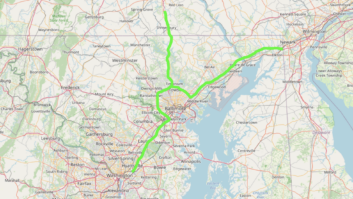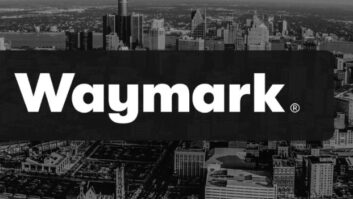
Michael McEwen is director general of the North American Broadcasters Association.
While there is a lot of talk in television about next generation TV (and to be fair, the talk is very real and not a lot of hype), radio is also undergoing its own next generation activity that will make radio more accessible on multiple platforms and provide more benefits to the listener, the advertiser and the broadcaster than ever before. Here are just a few examples:
dotRadio
For everyone in the radio community, now is an important time to explore an online opportunity that is specific to radio. There is a new, radiocentric, internet domain to replace the standard dot com: it is dotRadio. This new domain is being managed by the European Broadcasting Union, which put together a radio advisory group in January for this task. The North American Broadcasters Association, along with many other broadcasting associations, was one of the groups that endorsed the EBU’s management of this project back in 2012. The advisory group is chaired by Simon Spanswick, who is managing director of the Association of International Broadcasters.
The dotRadio domain is a Community Top Level Domain validated by ICANN, the Internet Corporation for Assigned Names and Numbers. What this means is applicants who truly belong to the radio community get priority, instead of the addresses simply going to the highest bidder. This will help control cybersquatting.
The launch period started August 23 and runs until October 31. During the launch, multiple groups can apply for the same domain and the dotRadio team will determine what group is the most appropriate. DotRadio will be for over-the-air and internet broadcasters, radio professionals and amateurs, along with vendors to the broadcast community. Take note that after October 31 there will be short break, and then general availability will start on November 15. At that point, the domains will be assigned on a first-come first-served basis (as long as the applicant is found to be a part of the radio community). So time is definitely of the essence. To find out more, go to the main dotRadio website.
FM CHIPS IN SMARTPHONES
NABA continues its work with the National Association of Broadcasters on research into FM chips in smartphones. We’ve been looking at quarterly smartphone sales in Canada, Mexico and the U.S., whether those phones have FM chips, and furthermore if those chips are then enabled to function as a radio receiver. Using the radio receiver instead of streaming radio saves battery life and data.
The research work started in the fourth quarter of 2015 and runs to the latest numbers for the first quarter of 2017. Some conclusions can be made — the data shows that the vast majority of smartphones across North America contain an FM chip (there is a small percentage of phones with no FM chip, but it is doubtful that those numbers will increase). In Canada and the U.S., of those top-selling smartphones that have FM chips that aren’t activated to receive radio, 100% of those are iPhones. Smartphones with FM chips activated are plentiful in all three countries, and especially in Mexico. Our most recent findings and a new summary across the whole collection period will be up on our revamped website, www.nabanet.com, mid-September.
In Mexico, the broadcast regulator has seen the public service value of enabling the FM chip in smartphones and has directed the mobile industry to enable them. This is not likely to happen in the U.S. or Canada but, nonetheless, we are encouraged by the positive response from regulators in both countries to the public service benefits of chip-enabled smartphones. As Radio World readers will recall, earlier this year the International Telecommunication Union amended their Task Force on Emergency Broadcasting report to encourage chip-enabled smartphones as an important public service in emergency situations.
So we aren’t at the end of the road on this issue yet, but we’re getting there.
APPS
NextRadio powered by TagStation LLC (whose parent company, Emmis Communications, is a member of NABA) is an app that lets smartphone owners use the enabled FM chip to listen to live local radio with enhanced content (e.g. search for stations by genre, see album artwork, interact with DJs, check out LiveGuide for what is currently playing on air, etc.). As of August, the NextRadio app is available for iPhone in the U.S. These users would need to stream radio (versus being able to receive over-the-air signals) but will be able to take full advantage of NextRadio’s features.
NextRadio has been having a great August because they also announced a deal with manufacturer LG Electronics. LG will enable the FM chips in their smartphones for North America and LATAM and the NextRadio app will come preloaded on select models.
NEXT STEPS
Over the last couple of years, NABA’s Radio Committee has concentrated on working groups that focused on the FM chip, and a voluntary North American standard for HD Radio (with a paper published last February and shared with the three North American administrations). While this work will continue, we will turn to integrating these efforts with the car dashboard and will include hybrid radio, streaming services and apps. We call it Next-Generation Radio.












